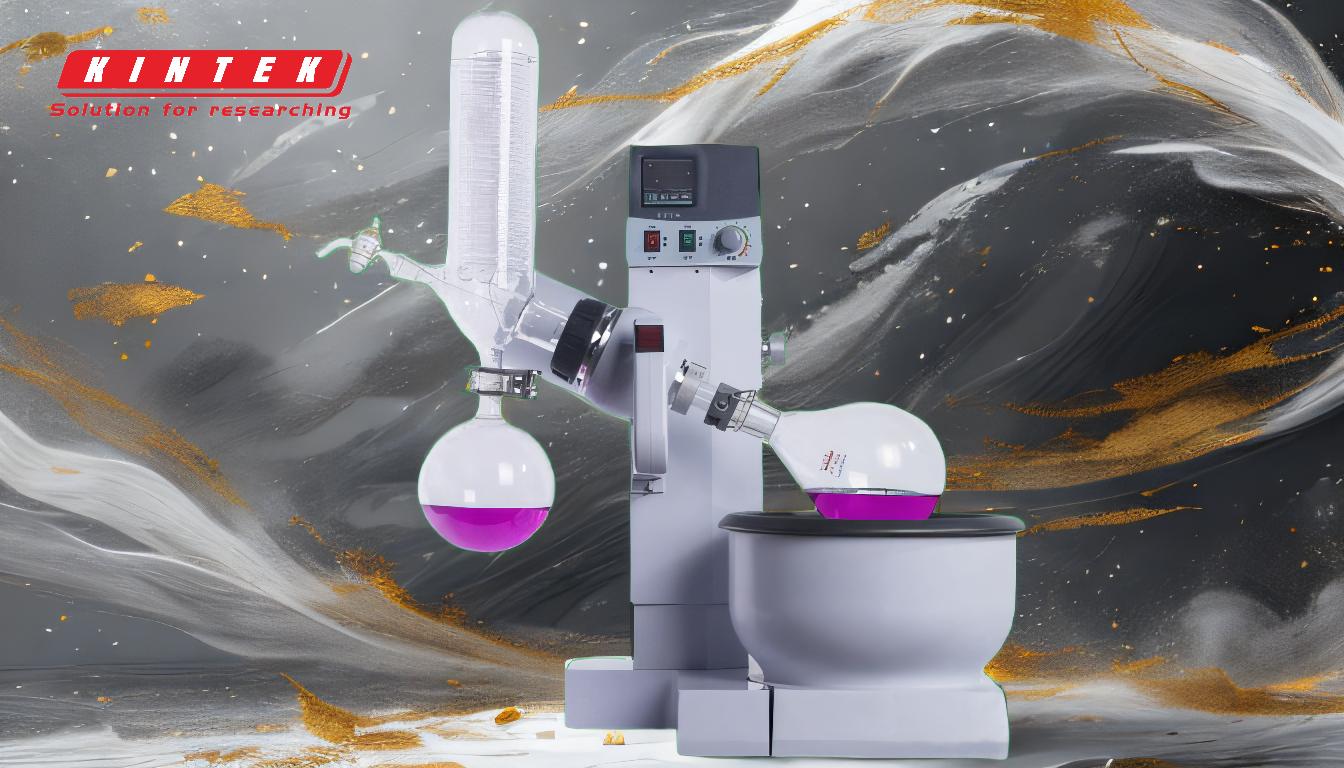A rotary evaporator is indeed capable of removing water from a mixture. This is achieved through a combination of controlled heating, reduced pressure, and continuous rotation of the evaporation flask. The process is efficient and gentle, making it suitable for applications ranging from laboratory research to culinary uses, such as concentrating fruit juices. The rotary evaporator works by lowering the boiling point of water under vacuum, allowing it to evaporate at lower temperatures, which minimizes the risk of thermal decomposition. Additionally, the device can handle mixtures containing both water and other solvents, such as ethanol, by adjusting temperature and pressure settings to optimize the evaporation process.
Key Points Explained:

-
Mechanism of Water Removal:
- Evaporation Under Reduced Pressure: A rotary evaporator removes water by creating a vacuum, which lowers the boiling point of water. This allows water to evaporate at temperatures lower than its normal boiling point (100°C at atmospheric pressure), reducing the risk of damaging heat-sensitive materials.
- Continuous Rotation: The flask containing the sample is continuously rotated, which increases the surface area of the liquid exposed to the vacuum. This enhances the rate of evaporation and ensures uniform heating.
-
Applications of Water Removal:
- Laboratory Use: In organic laboratories, rotary evaporators are commonly used to remove water from reaction mixtures, especially when isolating solid compounds. This is particularly useful for concentrating solutions or purifying compounds.
- Culinary Applications: Rotary evaporators are also used in kitchens to concentrate liquids, such as fruit juices, by removing water. This process preserves the delicate flavors and aromas that might be lost with traditional heating methods.
-
Handling Mixtures with Multiple Solvents:
- Water and Ethanol Mixtures: When dealing with mixtures containing both water and ethanol, the rotary evaporator can be adjusted to optimize the removal of each component. By controlling the temperature and pressure, ethanol (which has a lower boiling point than water) can be evaporated first, followed by water.
- Boiling Point Adjustment: The boiling point of the mixture can be adjusted by incrementally increasing the temperature. For example, if the mixture contains ethanol, the boiling point can be raised by adding more than 5°C to the current temperature after each distillation cycle.
-
Advantages Over Traditional Methods:
- Gentle Evaporation: Unlike traditional distillation methods, which often require high heat, a rotary evaporator operates at lower temperatures. This minimizes the risk of thermal decomposition, making it ideal for heat-sensitive materials.
- Efficiency: The combination of reduced pressure and continuous rotation allows for faster evaporation compared to open-air evaporation or simple heating.
-
Practical Considerations:
- Volume Capacity: Rotary evaporators can handle relatively large volumes, typically up to 3 liters, making them suitable for both small-scale and medium-scale applications.
- Versatility: They can be used with a variety of solvents, including water, ethanol, and other organic solvents, making them versatile tools in both laboratory and industrial settings.
-
Operational Tips:
- Temperature Control: Proper temperature control is crucial. The water bath should be set to a temperature slightly above the boiling point of the solvent being removed, but not so high as to cause thermal degradation.
- Vacuum Level: The vacuum pump should be adjusted to achieve the desired pressure, which will depend on the solvent being evaporated. Lower pressures allow for lower boiling points, but too much vacuum can cause bumping or foaming.
- Rotation Speed: The rotation speed of the flask should be optimized to ensure even heating and efficient evaporation without causing splashing or spillage.
In summary, a rotary evaporator is a highly effective tool for removing water from mixtures, offering advantages in terms of efficiency, gentleness, and versatility. Its ability to operate under reduced pressure and controlled temperatures makes it indispensable in both laboratory and culinary applications.
Summary Table:
| Key Feature | Description |
|---|---|
| Mechanism | Evaporation under reduced pressure and continuous rotation for efficient results. |
| Applications | Used in labs for isolating compounds and in kitchens for concentrating juices. |
| Handling Mixed Solvents | Adjusts temperature and pressure to remove water and solvents like ethanol. |
| Advantages | Gentle evaporation, high efficiency, and versatility for various solvents. |
| Volume Capacity | Handles up to 3 liters, suitable for small- to medium-scale applications. |
| Operational Tips | Control temperature, vacuum level, and rotation speed for optimal performance. |
Ready to enhance your lab or kitchen processes? Contact us today to learn more about rotary evaporators!










